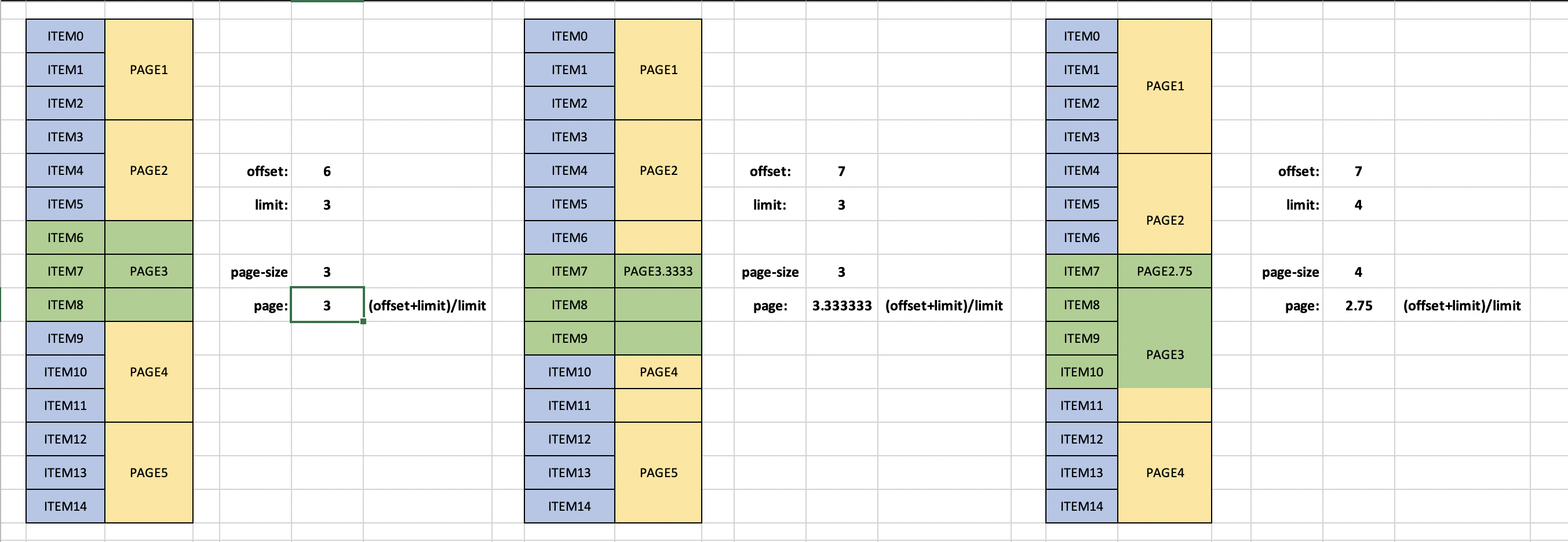In Page/PageSize vs Offset/Limit, using Page/PageSize is simpler, because PageSize is the same for all Pages ; but using Offset/Limit gives you more precise data if you are targeting specific range of items, and you cannot do this using Page/PageSize method. Image below shows you the relationship between the two:
![enter image description here]()
On the first block if you are targeting for the item 6 to item 8, your PageSize is 3:
Limit = PageSize = 3
Page = 3 // from the first block above, item 6 to item 8 sits on Page 3
Offset = (Page * PageSize) - PageSize
Offset = (3 * 3) - 3
Offset = 6
On the second block if you are targeting for the item 7 to item 9, so your PageSize is 3 again:
Limit = PageSize = 3
Page = 3.3333 // from the 2nd block, item 7 to item 9 sits exactly in Page = 3.3333, and not in Page = 3
Offset = (Page * PageSize) - PageSize
Offset = (3.3333 * 3) - 3
Offset = 9.9999 - 3
Offset = 7
On the 3rd block you are targeting for item 7 to item 10, so your PageSize = 4:
Limit = PageSize = 4
Page = 2.75 // from the 3rd block, item 7 to item 9 sits exactly in Page = 2.75, and not in Page 3, if the PageSize is 4
Offset = (Page * PageSize) - PageSize
Offset = (2.75 * 4) - 4
Offset = 11 - 4
Offset = 7
Ovbiously the Offset is the starting index of your target items and the Limit is the count of the items you are targeting. I'm just showing you the relationship of the 2 methods.

